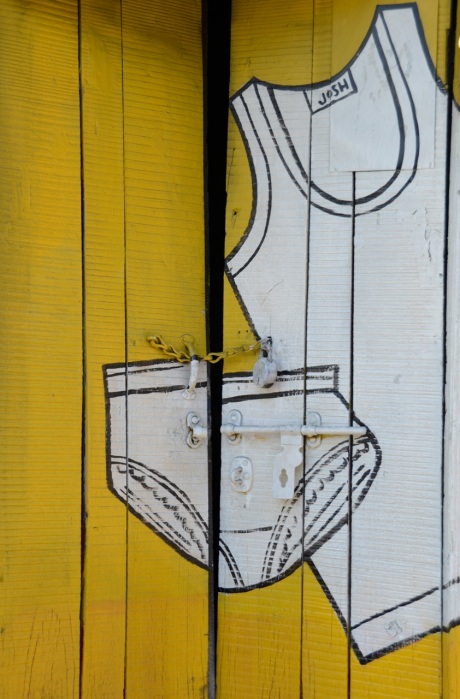The line between buildings (commercial and residential) and advertising often gets blurred in India – as the latter acts as an outer skin in the form of painted hoardings on shops, houses and abandoned buildings on main roads and highways. There are times when these hoardings take over long stretches of national road networks and in some cases entire villages. Some find this visual encroachment extremely ugly while others (like myself) are able find a sense of beauty in the way they add to the built environment as well as the overall landscape.

Majority of these signs and hoardings continue to be hand-painted as opposed to digital printouts. I’m not sure how long this practice of painting walls will continue, but while it does these advertising strategies ensure buildings get a fresh coat of paint every few years. As there are also subtle variations within each iteration, which include [creative] spelling mistakes and other slight anomalies – these serve as reminders of obvious traces and imperfections of the human hand – that ultimately have their own charm.
I also find it interesting to observe how over the years as certain brands gain prominence and amp up their advertising strategies while others fade from view, these buildings also shift and change their colors and patterns to mimic the trends. In 2010 most of the buildings around the area from where this set of images were taken were red (Vodafone, ACC and Coca-Cola), as well as blue (Reliance) and yellow (Ambuja Cement), but now there are other brands that appear to be more prominent. When viewed collectively this also means that a significant change in the landscape of a town or village even though the overall constructions remain the same.
Pictured in this post are some images of Josh (which literally means spirit, vigor) baniyan (sleeveless undershirt) and underwear (by Dixcy) ads from the main highway near Solan Brewery in Himachal Pradesh.
Additionally, the image below in particular is one instance when it is possible to read the placement of images and text on houses and buildings in ways that go beyond their intended message. In this case lace trimmed underwear painted on a locked but slightly ajar door makes for an interesting read in the context of dress and morality in India.















